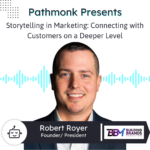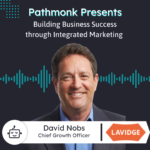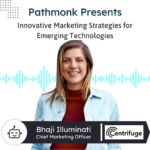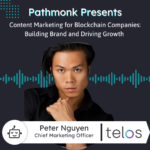Social Media Management Software
Introduction
Emeric Ernoult is a Co-Founder and CEO of Agorapulse which is a social media management software that helps to leverage social data to rank and score audiences on Facebook, Twitter, and Instagram.
Emeric considers himself a social media and Facebook marketing addict and that is why his business runs in the social media marketing space. We recommend checking out Emeric’s Twitter account where he posts interesting little experiments he has done in social media.
Since Agorapulse is working mostly with SMB clients Emeric shares his approach on how to build an inbound strategy that helps them to get customers. We also discussed about website optimization and website metrics that Agorapulse is focusing on. Want to know more about how a successful SaaS business approaches these topics? Tune in….
See the full interview below…
Pathmonk: Welcome to the show guys, business owners, directors in marketers to today’s show. I’m meeting Emeric from Agorapulse. I want to tell you a bit about Emeric, before we actually get started with the show. He is a cofounder of Agorapulse, in a true sense SaaS entrepreneur in the social media marketing space. Actually, what is really interesting, he posts a lot of little social media experiments on his Twitter accounts and he considers himself a social media and Facebook marketing addict, hence the product that they’re working on. I’m really excited to learn more from Emeric about the product and about his take on social media marketing. So welcome to the show.
Emeric Ernoult: Thank you, Lukas. Thanks for having me. How are you?
Pathmonk: Good. So tell us about your company. What is it all about?
Emeric Ernoult: Agorapulse started at the end of 2011. It’s part of the group of products that fits under the term social media management. When you think about the vision and the mission we have for ourselves to help the market with, or to have an impact on the market somehow, is to basically turn social media chaos into value. That’s the end result. That’s what we want to create. Like social media is a huge chaos. Everybody will agree with you when you tell them: “Hey you social media is something clear and nice and that you understand and you get, and you see how valuable it is for you to spend time on social media?” A hundred percent of people will tell you, no, I don’t. I mean it’s chaotic. It’s all over the place. I don’t get it I’m not sure it’s even ROI positive, whatever. Our mission at the end of the day, we want to turn that chaos into something people can manage and they can see, they can get value out of managing it. That’s that’s what we do.
Pathmonk: Who would be the types of people or the types of companies that would be using a Agorapulse to make sense of that?
Emeric Ernoult: As of right now, the ideal customer for us are the social media managers who are the ones in charge of making sure that the content is being published on time. When content has to be published across different social profiles and that messages and private messages and commons and reviews are being addressed, responded to. So, in other words, the incoming content on those many social profiles that the businesses present on are being managed and the subset of ideal customers for us are agencies who do that for their clients.
Pathmonk: How would any of those social media marketing managers usually find you? Could you describe a typical journey that they would go through in order to find and discover?
Emeric Ernoult: So it’s a good question. We are not an enterprise solution so we don’t have an army of sales people who keep cold calling, a venture of potential targets or prospects. We are in the SMB space so we’re a low touch. It’s quite affordable and it’s in the affordable range. That means that you cannot have people cold calling all day long. Because it’s too expensive, there’s no ROI in this. You have to be able to an engine that makes sure eventually when people are looking for a solution like the one you are offering they find you. Basically when people are in that process of finding a software like ours where part of the consideration process, so it’s a whole set of things. It’s not one thing. It’s basically making sure that you are present when people search on Google for the keywords that lead to your presence of the review sites where people are checking those review sites to see if you’re worth checking or not. Also that you are present in your prospects life to give them value, provide value to them before they even consider purchasing you. It means, creating some useful and unique content, that the appreciate consuming, offering them, training and certifications and webinars and all that kind of value. It can take many different forms. It’s all that and there’s no silver bullet. It’s a combination of all these.
Pathmonk: Any new channels that you’re very excited about at the very moment?
Emeric Ernoult: I mean, this sounds like growth hacking. I don’t believe in growth hacking. Well not in the sense that a lot of people have been describing growth hacking. I believe in growth hacking in a sense that growth is a constant integration and what works, what doesn’t work and what else can you test? And it’s something it’s a logic. Maybe one can say that you have to install in your company. That’s so people understand that not everything needs to be tested all the time and they need to be not constant learning about what works, what doesn’t work. Okay here’s no channel in particular. There’s no, maybe Facebook ads were cheap and working five years ago or six years ago, but not anymore. You cannot build a business on, Oh my God, this channel is working and it’s so cheap right now because in a year or 18 months it will be gone. It’s kind of cool if you can seize that when it happens, but it’s not as a strategic move. It’s a tactical moves on. I love tactics, but I like strategic, strategic much better.
Pathmonk: You mentioned that the approach would be rather low touch. Could you tell me about the role of the website? Is that then something that is key for your
Emeric Ernoult: It is important, but what’s really key is what happens before the website because if what happens before the website is nailed and you’ve succeeded in building that consideration funnel. They eventually say, I got to check this, these guys and go on their website, at least they’re not disappointed. So that’s the very least. You have to make sure that you look okay. We’re not super happy about the way our website looks right now. It’s okay. It’s not great. We know we still have progress to make there compared to some other websites we admire. Well it’s actually better than most of our bigger competitors, so I’m okay with that for now. I’d like it to look even better and to be even more nice to browse and check and clear and so on and so forth. Not to disappoint is the number one and number two is provide the answer that people may be looking for. Do they have feature, do they do these, do they do that? So you have to make sure that our website is covering those questions. It’s an important role but it’s not as important as what you do to get people to get your website.
Pathmonk: You mentioned that pre consideration funnel, so you have that pre consideration funnel and you have the website. What types of metrics then do you take into consideration or do you consider really important from the bunch of metrics that you could take into consideration? What is key for you to steer the business?
Emeric Ernoult: Huh. That’s an amazing question. It’s actually an amazing question. We’re working on a lot right now, so I can’t really answer your question, at this point because we’re putting together the sets of metrics that we absolutely want and need to track. It’s difficult when you look at a lot of the metrics you used to look. Like I don’t know, traffic, if you look at global traffic that we used to look at for a while, if you have one blog post that’s getting an amazing the amount of traffic but it’s completely useless. That’s exactly something we had and we still have, for some reason Google likes us for anything relating to getting more followers on Instagram. We have one post in English, one in French and one in Spanish that are all about how to get more followers on Instagram. Those posts makes for a fourth of our entire traffic. Yeah I know because it’s a super high volume requests on Google. A lot of people want once more followers on Instagram and we’re ranking super high for this search, that blog posts. That’s that’s difficult blood seeming, a piece of content. Now traffic is made of a lot of people who will never be a client of ours cause they’re too small. They don’t have, they don’t need us basically. It’s if you look at my traffic and you take that as a KPI, you’re going to be fooled by, in a lot of different ways. If it goes up, you say, yeah, amazing. Maybe it’s just that blog post got one more rank up and suddenly it explodes in terms of conversion. We learned over the years that looking at that alone is meaningless.You say, okay, so what should we track? So now we’re focusing on tracking the none content traffic. We look at the traffic on our culprit website, the one where we have the home page, the pricing page, and the feature pages. I would even argue that if you track only the pricing page, you’re probably very close to the intent. Traffic is the right metric when you look at web traffic and then you look at, okay, how many from that is becoming a free trial? How many of them become a paid client. Those will be the metrics, either entity I would track. On the website it’s tricky as I said, to identify what is the most pertinent metric you want to try. You want to track on the traffic website.
Pathmonk: You mentioned, you alluded to conversion rate, on the pricing page at least. Is that something you have been trying to improve with the team? Is that something you actively tackle or is that something that’s kind of a great question.
Emeric Ernoult: Yeah, I have a marketing team who loves doing experiments and AB test and all that stuff. I am more of the kind of person who likes to go with my gut feeling and common sense and what is the right thing to do? Oh the price age. They did run a bunch of experiments comparing pricing pages that looked ugly to me. Like for example, at one point the tested the page with a very long list of features. It was so long I couldn’t even read the list of features. It was like, I dunno, 50 features like who reads 50 features in the pricing page? No one. They told me, Oh, that won against the short list of features. I said, nah, I mean, I love to AB test and all that stuff. It’s super fun and everything, but please give me a pricing page that looks good. I don’t care if it wins, if it looks bad, I don’t want it to, I don’t want to use it. It’s interesting you say that because we went from doing a lot of tests on the pricing page to almost doing no tests on the pricing page and say, okay, let’s build a pricing page that’s clear, that lists the main, the core features that tell people what they need to know. There is a bunch of things they probably don’t want to know at that point that we hide and we removed. But and that’s it. That looks good. We decide that this is what we want. Obviously, you asking your clients, you ask your prospects and you look at your competitors, not for our pricing pages, but I went from that place of testing everything. Oh, if we change the color of that button, which by the way is bullshit. Don’t change the color of a button or pricing page as an AB test is completely, it’s a complete waste of time. But all of that is hard. Taking a lot of time, energy, resources.(…) So now I am like, let’s build a good looking one that’s clear enough that gets everything we think and our prospects told us they want and not worry too much about testing digital small variations that are actively are not going to change a lot.
Pathmonk: One small follow up question on this before we change gears.Talking about your business. You have on your page the booking a demo as well as starting your free trial buttons. Like are there different targets, different types of clients that you would invite for a demo?
Emeric Ernoult: Well people want to be in, get in touch with your product in different ways and that’s the way it is. Wherever we are, whether they’re paying 99 or 499 there will be people who want to see someone talk. There will be people that just want to start a free trial and don’t talk to anybody. There will be people we want to click on your guide, walking walkthroughs and guides and stuff that you’ve installed. You have to appeal to all of them. You have to offer each and every one of those prospects the way they want to discover your products. Obviously you can, if they only want to pay 49 or 99 and you cannot do one-on-one demos because it’s not working financially for you can do group demos, which is what we do for it’s four or five people in one demo. They can ask questions, they can talk to the person, but it’s not one. So it’s more scalable basically. I don’t think it’s based on the more they pay, the more they want to have the personal touch and contact with someone that’s true. That’s for sure. For everybody else, it really depends on the people I know. I’m the kind of guy who would just want to discover the product and spend 15 minutes on it and see if I see something I like or not, I don’t want to talk to a salesperson if I’m not already convinced that this is what I need. We’re all different in the way we want to discover products.
Pathmonk: I would have one question. It’s something that you’ve been writing about maybe or maybe two years ago, more and you have been writing about the fact of being in a competitive large market versus being a pioneer in something relatively new. I was wondering if your perspective on this, because if I understood it right, it seems to be tending quite to rather be in a large competitive market because this will carry you along. I was wondering how your perspective has been evolved on this type of topic because it seemed to have had quite some engagement with this topic in the past.
Emeric Ernoult: Yeah. I still feel the same about these statements. It is still as difficult as it was back then to succeed in a competitive market, but at the same time, competitive, big and growing market because that’s the market we’re in right now. To find a creative way to outperform your competition than it is to convince people who don’t think they need you. What I mean? Like trying to convince someone, Oh, you need my tool. Are you sure? I’m not sure. I don’t feel I need, you were told, I don’t want to spend 15 minutes listening to you telling me why I need, you were told where in the first place. I don’t even think I need you at all. That is horrible. I’ve been in that seat as an entrepreneur for a long time, for 10 years. Trust me, you don’t want to be in a play that’s a horrible place. It is difficult to have competition, but you can always come up with ways, ideas, creative ideas to do something they don’t and go grab a niche that they’ve left. It is hard, but it is less hard than convincing the market that they need you because that I don’t need to convince the market and in social media management, they’re already looking for it.
Pathmonk: Makes total sense. Fully get, it was just curious if your perspective has changed over the years.
Emeric Ernoult: Every markets today are competitive. I mean look at email, look at CRM, look at everything. Every time I stumbled upon a new partner, a new friend who does SaaS. I mean they all tell me we have 10 competitors. Everyone has 10 competitors these days. So it is tough.
Pathmonk: I would be curious to learn since we are coming close to an end of the interview today, I would like to learn about you as a business founder. What would be one thing, if you would zoom back to the day when you started, what would be one advice that you would give yourself?
Emeric Ernoult: Oh my God, there’s so much. Give it one or two. Well number one, you think you’re going to learn one or two things and he’s going to be okay. No no. You’re going to learn things every freaking week, every fucking month for the next 20, 25 years. I mean that’s, learning never stops. I’m still learning things today and today we’re at 10 million ARR, we have 70 employees, we have 6,500 clients all across the globe. We look successful from the outside and there are days where I look at how we, how I run the business and how we do things and like, Oh my God, this is so bad. So, you know, it never stops. It keeps being a challenge and every new, steps that you go through, you realize that, gosh, you have to learn all these new things because now you’ve changed dimensions and that the way you did things last year is not going to cut it this time. So that’s the first thing. Be prepared for that because any and like make sure you like that it’s not gonna stop.I dunno, there was one thing I wish I could tell me back in the days like don’t worry, don’t be stressed. It’s going to be okay. You’re going to make it. Cause we’ve gone through a lot of very difficult times and a lot of failures and a lot of the things we try, we’ve my co founder, it didn’t work out and were paying ourselves nothing or a minimum wage or it really was hard and I wish I knew at the time like okay, it’s going to be hard, but at the end there is light at the end of the tunnel and I can go with life and not feel guilty and don’t feel like I need to work 15 hours a day and not take vacations and all that stuff that all that sacrifice. I wish I didn’t sacrifice all I’ve sacrificed, but maybe that’s what helped me get where I got invented. Everybody can pick how they interpret this advice. Very good one way or the other yourself or do not torture yourself depending on how you feel. This may help you get to where you want to get.
Pathmonk: Thanks Emeric. I really appreciate you took the time of your busy day to let us know about your company and the way you run the company. Thanks for being part of the show today.












